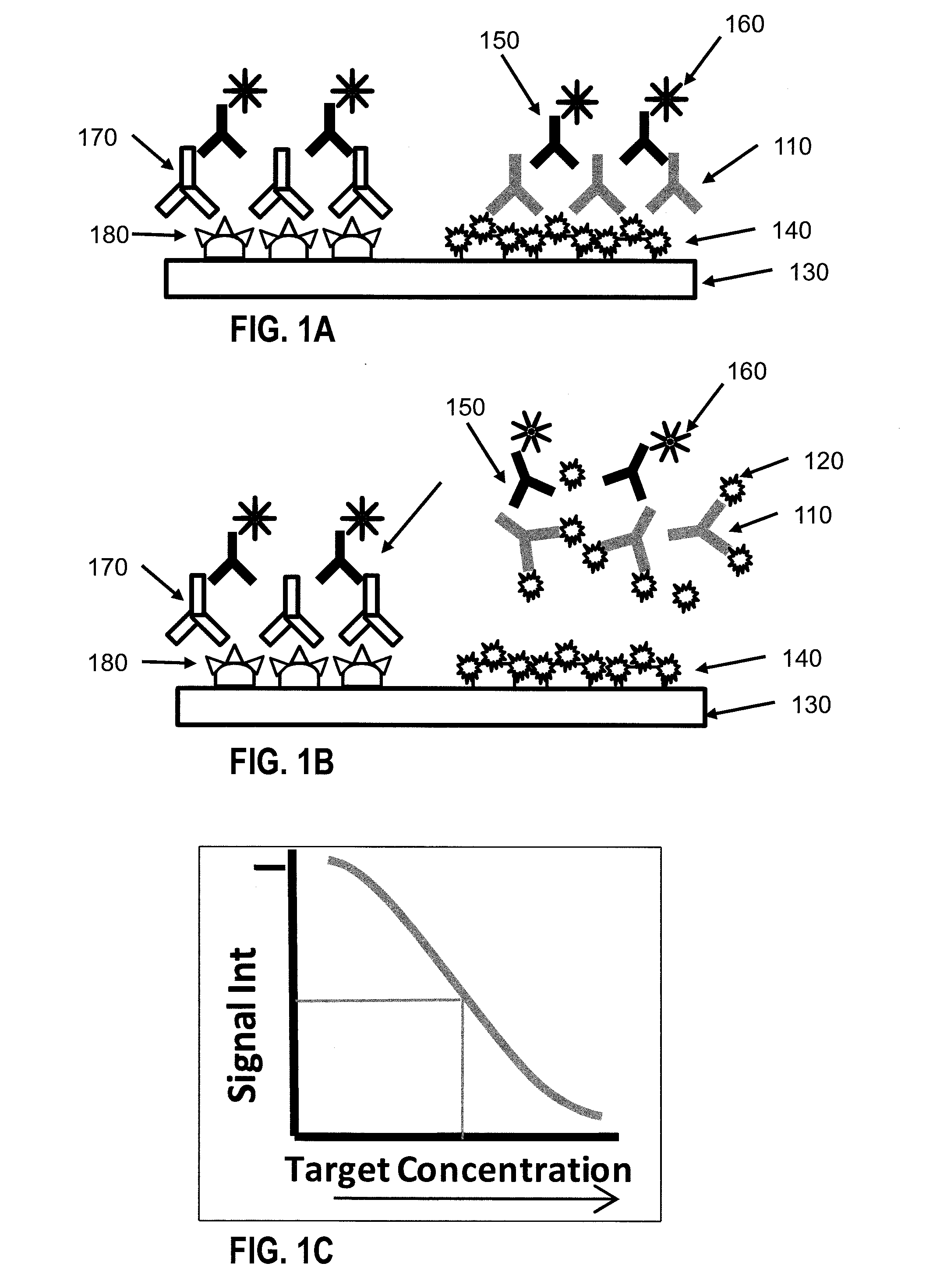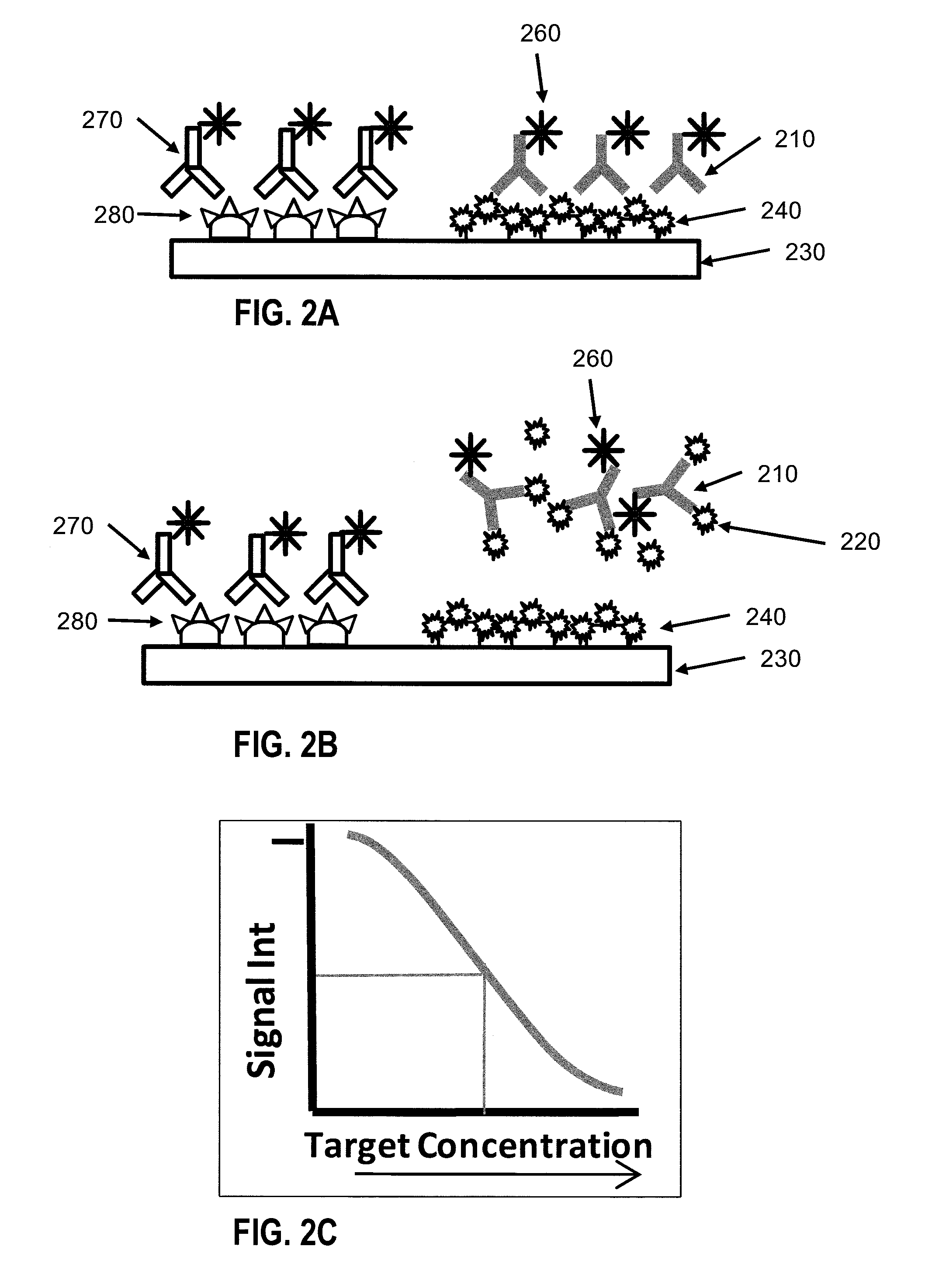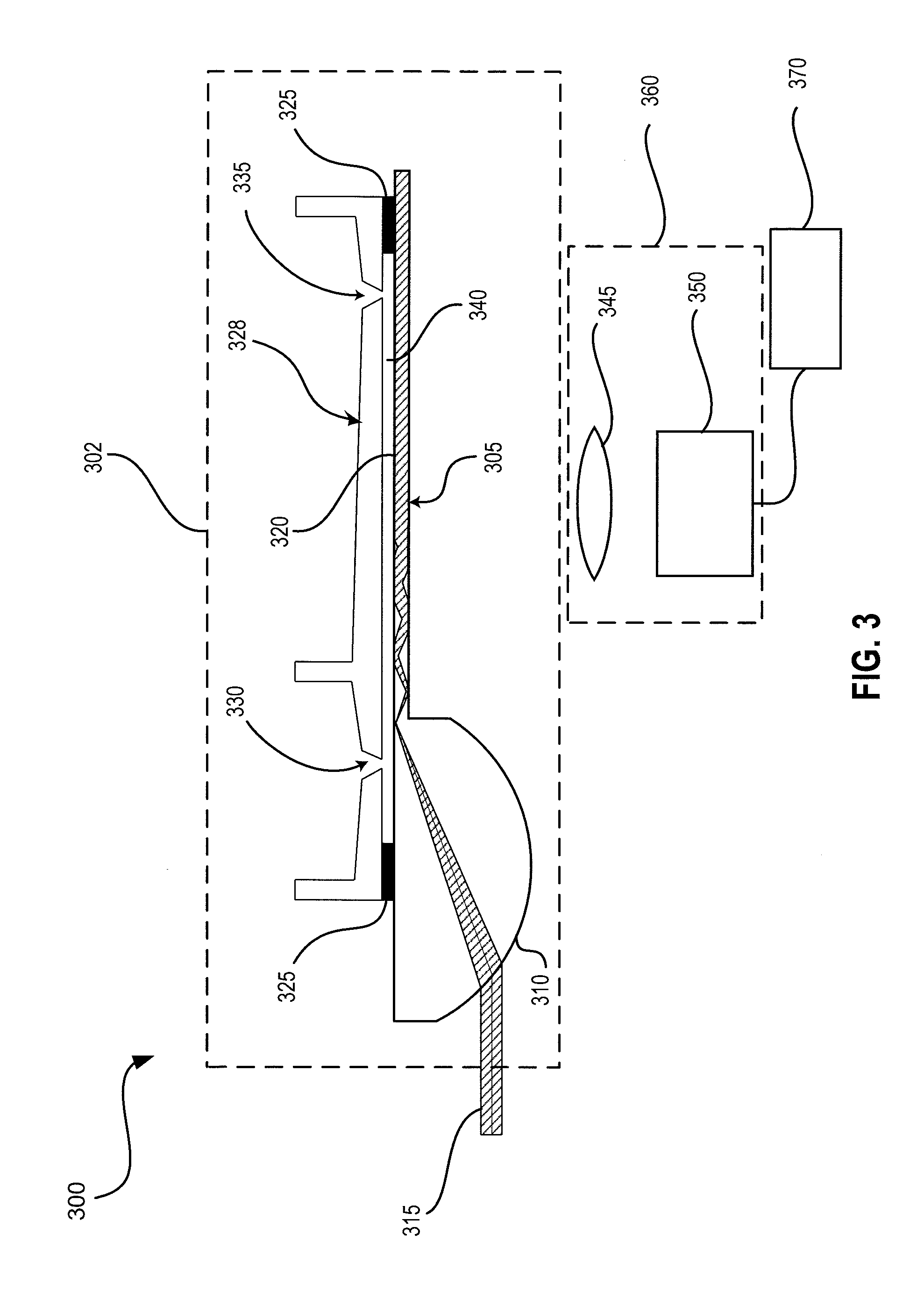System And Method For Detection And Analysis Of A Molecule In A Sample
a technology for detecting and analysing molecules, applied in the field of system and methods for detecting and/or measuring small molecules, can solve the problems of increasing the amount of sample, reagent and processing required to complete an assay, and the limitations of conventional competitive immunoassays,
- Summary
- Abstract
- Description
- Claims
- Application Information
AI Technical Summary
Benefits of technology
Problems solved by technology
Method used
Image
Examples
example 1
Materials and Instruments
[0068]Assay Cartridge and Instrument.
[0069]The system described in the examples here combined single-use disposable assay cartridges with a reader instrument. Fluorescence immunoassays were illuminated and captured and imaged using a multi-mode planar waveguide technology. Various types of planar waveguides have been used in biosensor and immunoassay applications for decades, and are the subject of several technical reviews. Briefly, a light source (e.g., a laser) was directed into a waveguide substrate. The present system uses a planar waveguide system as disclosed, for example, in U.S. Patent Application Publication No. 2010 / 0220318 entitled “Waveguide with Integrated Lens” as filed 12 Nov. 2009, and U.S. Patent Application Publication No. 2011 / 0049388 entitled “Planar Optical Waveguide with Core of Low-Index-of-Refraction Interrogation Medium” as filed 9 Nov. 2010, which applications are incorporated herein by reference in its entirety.
[0070]The cartridge...
example 2
Competitive Assay
[0072]FIG. 1 shows a diagrammatic representation of an indirect competitive assay technique. According to FIG. 1, a primary anti-B antibody 110 may be mixed with a sample containing a target analyte B 120. A device having a surface 130 serves as the platform for the assay. Capture molecules 140 are immobilized on the surface 130. By way of example, FIG. 1 shows antigen B (same as target analyte B) as the capture molecule. A secondary antibody 150 with excitable tag 160 recognizes the primary antibody 110. When exciting light is shed on the spot on the surface, the excitable tag emits light signal which has intensity that is proportional to the amount of excitable tags attached to the spot. When no target analyte B is present in the sample, all of the anti-B antibodies 110 bind to the capture molecule 140 (FIG. 1A). When target analyte B 120 is present in the sample, target analyte B 120 competes against capture molecule 140 in binding with the labeling molecules 110...
PUM
 Login to View More
Login to View More Abstract
Description
Claims
Application Information
 Login to View More
Login to View More - R&D
- Intellectual Property
- Life Sciences
- Materials
- Tech Scout
- Unparalleled Data Quality
- Higher Quality Content
- 60% Fewer Hallucinations
Browse by: Latest US Patents, China's latest patents, Technical Efficacy Thesaurus, Application Domain, Technology Topic, Popular Technical Reports.
© 2025 PatSnap. All rights reserved.Legal|Privacy policy|Modern Slavery Act Transparency Statement|Sitemap|About US| Contact US: help@patsnap.com



